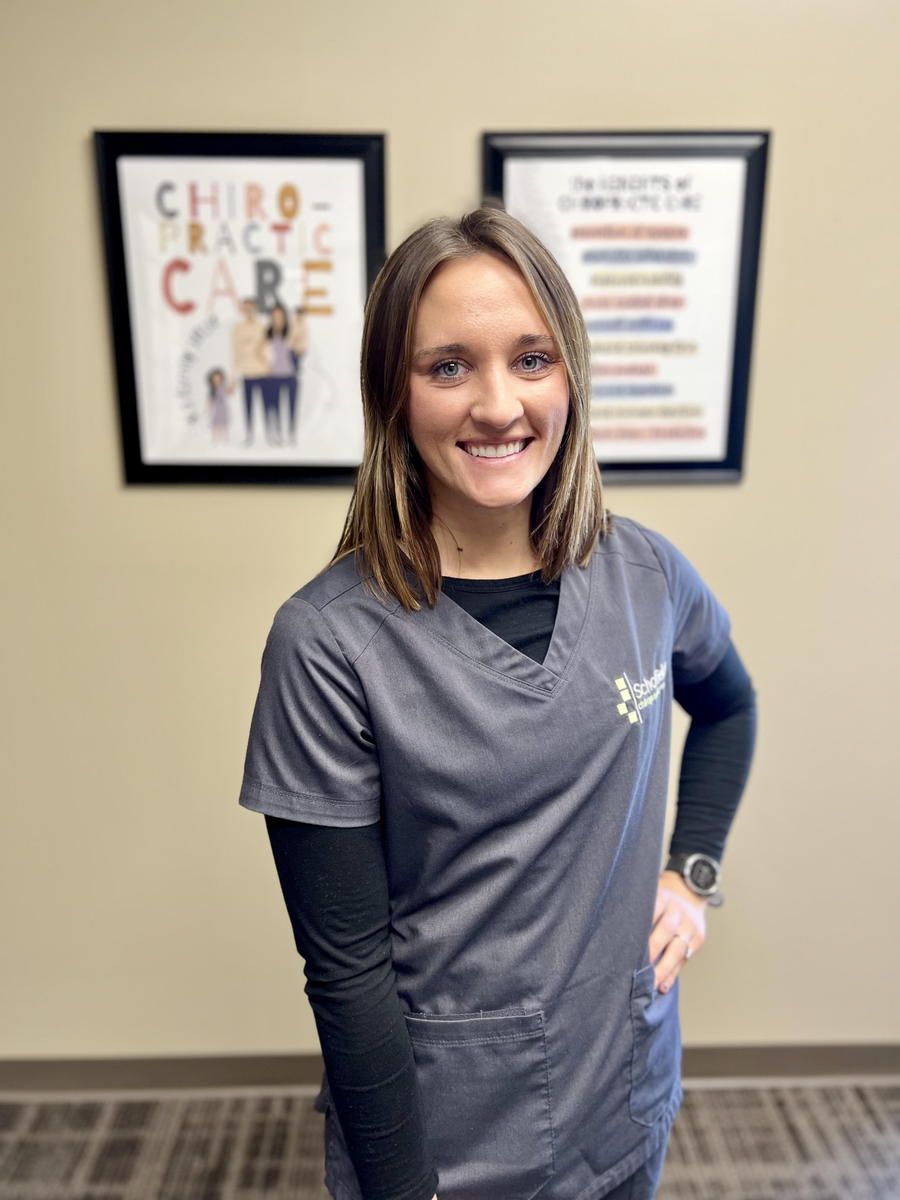What is the Spinal Galant Reflex and How Might a Retained Reflex be Impacting Your Child?

- posted: May 10, 2024
The Spinal Galant reflex is one of many primitive reflexes. A primitive reflex is an involuntary reflex that we are all born with. The Spinal Galant reflex is developed in utero around 20 weeks and should be fully developed at birth. The reflex should be integrated (go away) between 3-9 months of age and remain dormant through all stages of life. In some cases, the reflex is not fully integrated and may remain present and can cause serious side effects.
Some factors that can contribute to an unintegrated Spinal Galant reflex include but are not limited to: stress during pregnancy, caesarean section birth, premature and low birth weight, significant illness during the first year of life, insufficient stimulation or tummy positioning, and lack of free movement time on the floor. Additionally, if a child has successfully integrated the reflex but experiences a sudden or chronic bout of trauma, stress, or injury, the reflex can re-activate. If not fully integrated, your child may experience several side effects including: difficulty concentrating, poor posture, digestive issues, aversion and hypersensitivity to clothing and tactile input, poor short-term memory, fidgeting and hip movement while seated in a chair, and difficulty potty training that can involve bedwetting and bowel incontinence past the age of 5.
So how do you know if the Spinal Galant reflex needs to be integrated for your child? The reflex is triggered by stimuli to the back. To test your child, have him/her lay on their stomach and stroke down one side of their back. If the child’s muscles on the same side tighten, twitch, or jerk towards the stimuli, the reflex is most likely still present. The reflex may be present on both or only one side.
If you suspect your child is dealing with a retained Spinal Galant reflex, the first step is to talk to a trusted medical professional. Many pediatricians, physical therapists, and chiropractors are familiar with primitive reflex integration. Seek out the best fit for you and your child! In the meantime, there are different exercises and play activities you can incorporate in your child’s daily routine that can help promote Spinal Galant integration.
For babies and children under the age of three, the best way to promote primitive reflex integration is to promote an environment where they can experience different sensory activities. By providing an infant with different types of sensory stimulation, new neural pathways will be developed in the brain, thus promoting new behaviors. Examples of sensory activities to provide to your newborn infant include the following:
- Natural movement – instead of carrying your newborn in a carrier or stroller, use a wrap to carry baby on your body and allow more natural movement.
- Tummy time – A MUST! Tummy time is great for gross motor and total development. The best way to start introducing tummy time is to be chest to chest with baby. Then, incorporate tummy time into every day waking play, thus, improving tolerance in the long run. Placing toys and motivating items on both sides can promote turning in both directions. This is encouraged with pre-crawling and crawling as well.
- Exposure to a variety of sights, sounds, smells, and tactile experiences.
- Hip movement stimulation – this is especially crucial as the infant is learning to move into the crawling position. Additionally, encourage different rolling and crawling patterns. Be creative! Ask them to crawl like a worm, snake, bear, etc.
- Rolling – make sure your child is rolling in both directions, not just one!
Because each newborn and their experiences are different, there is no way to guarantee that the Spinal Galant reflex will be successfully integrated by 9 months of age; however, by utilizing these strategies, you can feel more confident that baby will be getting the sensory experience necessary for potential primitive reflex integration.
If your child is older, snow angels are the most common exercise recommended for Spinal Galant integration. Don’t worry, though. No snow is needed! Start by having your child lay on their back with their arms at their side and legs straight together. Then, have your child slowly move their arms away from their body and up above their head while simultaneously moving their legs apart from each other. It’s important to keep both arms and both legs in contact with the ground/floor and keep them straight. Finally, slowly return to the starting position. This entire process is considered to be one rep. Try to have your child complete 10 reps twice daily.
Always remember, your child is unique, and there is nothing wrong with them! If your child is dealing with bedwetting, fidgeting, difficulty with concentration, or if you have any concerns, give our office a call to schedule an appointment and help support your child as he/she grows and develops through every season of life.

Dr. Lauren Block earned advanced credentialing in prenatal care from Palmer College of Chiropractic. She is a member of the International Chiropractic Pediatrics Association and is certified in the Webster Technique which is specifically designed to care for pregnant mothers.

- posted: May 10, 2024
The Spinal Galant reflex is one of many primitive reflexes. A primitive reflex is an involuntary reflex that we are all born with. The Spinal Galant reflex is developed in utero around 20 weeks and should be fully developed at birth. The reflex should be integrated (go away) between 3-9 months of age and remain dormant through all stages of life. In some cases, the reflex is not fully integrated and may remain present and can cause serious side effects.
Some factors that can contribute to an unintegrated Spinal Galant reflex include but are not limited to: stress during pregnancy, caesarean section birth, premature and low birth weight, significant illness during the first year of life, insufficient stimulation or tummy positioning, and lack of free movement time on the floor. Additionally, if a child has successfully integrated the reflex but experiences a sudden or chronic bout of trauma, stress, or injury, the reflex can re-activate. If not fully integrated, your child may experience several side effects including: difficulty concentrating, poor posture, digestive issues, aversion and hypersensitivity to clothing and tactile input, poor short-term memory, fidgeting and hip movement while seated in a chair, and difficulty potty training that can involve bedwetting and bowel incontinence past the age of 5.
So how do you know if the Spinal Galant reflex needs to be integrated for your child? The reflex is triggered by stimuli to the back. To test your child, have him/her lay on their stomach and stroke down one side of their back. If the child’s muscles on the same side tighten, twitch, or jerk towards the stimuli, the reflex is most likely still present. The reflex may be present on both or only one side.
If you suspect your child is dealing with a retained Spinal Galant reflex, the first step is to talk to a trusted medical professional. Many pediatricians, physical therapists, and chiropractors are familiar with primitive reflex integration. Seek out the best fit for you and your child! In the meantime, there are different exercises and play activities you can incorporate in your child’s daily routine that can help promote Spinal Galant integration.
For babies and children under the age of three, the best way to promote primitive reflex integration is to promote an environment where they can experience different sensory activities. By providing an infant with different types of sensory stimulation, new neural pathways will be developed in the brain, thus promoting new behaviors. Examples of sensory activities to provide to your newborn infant include the following:
- Natural movement – instead of carrying your newborn in a carrier or stroller, use a wrap to carry baby on your body and allow more natural movement.
- Tummy time – A MUST! Tummy time is great for gross motor and total development. The best way to start introducing tummy time is to be chest to chest with baby. Then, incorporate tummy time into every day waking play, thus, improving tolerance in the long run. Placing toys and motivating items on both sides can promote turning in both directions. This is encouraged with pre-crawling and crawling as well.
- Exposure to a variety of sights, sounds, smells, and tactile experiences.
- Hip movement stimulation – this is especially crucial as the infant is learning to move into the crawling position. Additionally, encourage different rolling and crawling patterns. Be creative! Ask them to crawl like a worm, snake, bear, etc.
- Rolling – make sure your child is rolling in both directions, not just one!
Because each newborn and their experiences are different, there is no way to guarantee that the Spinal Galant reflex will be successfully integrated by 9 months of age; however, by utilizing these strategies, you can feel more confident that baby will be getting the sensory experience necessary for potential primitive reflex integration.
If your child is older, snow angels are the most common exercise recommended for Spinal Galant integration. Don’t worry, though. No snow is needed! Start by having your child lay on their back with their arms at their side and legs straight together. Then, have your child slowly move their arms away from their body and up above their head while simultaneously moving their legs apart from each other. It’s important to keep both arms and both legs in contact with the ground/floor and keep them straight. Finally, slowly return to the starting position. This entire process is considered to be one rep. Try to have your child complete 10 reps twice daily.
Always remember, your child is unique, and there is nothing wrong with them! If your child is dealing with bedwetting, fidgeting, difficulty with concentration, or if you have any concerns, give our office a call to schedule an appointment and help support your child as he/she grows and develops through every season of life.

Dr. Lauren Block earned advanced credentialing in prenatal care from Palmer College of Chiropractic. She is a member of the International Chiropractic Pediatrics Association and is certified in the Webster Technique which is specifically designed to care for pregnant mothers.
1001 Hudson Rd., Ste. A
Cedar Falls, IA, 50613
